Complete Guide to Sexual Identity Flags
You might know the rainbow flag, but do you know what the bear paw means? This complete guide to sexual identity flags will help you decode the meaning.
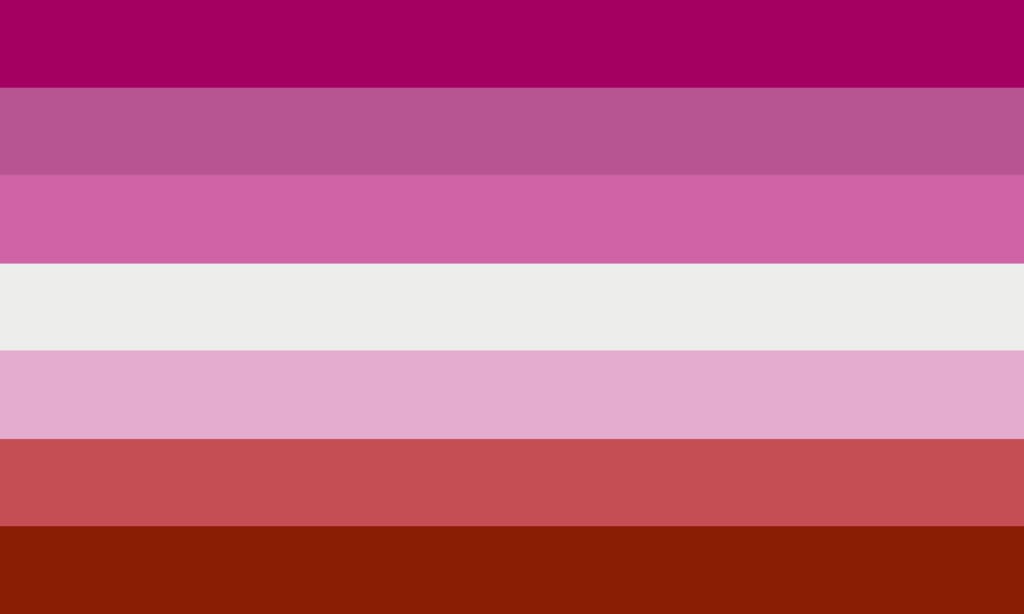
By now, everyone in the world knows what a rainbow flag means. It means that you are part of the LGBTQIA+ community, and it means that you stand against homophobia, transphobia, and close-minded hatred. It's a beautiful flag, but the truth is that most people don't realize that it's just one of many.
Over the years, many communities have made sexuality and gender pride flags that represent their sexual identities. These sexual identity flags became famous in their own right, and became part of what people identify with.
Many sexual identity flags and gender identity symbols are pretty rare to see in person. I ought to know; I'm agender and finding my identity symbol can be damned near impossible off the net. (I only saw three sporting the flag when I went to my last pride event.)
If you aren't sure what a flag means when you see it, this complete guide to sexual identity flags can help you out.
(Note: Due to the length of this article, kink symbols will not be included.)
LGBTQ + General Gay/Lesbian Pride
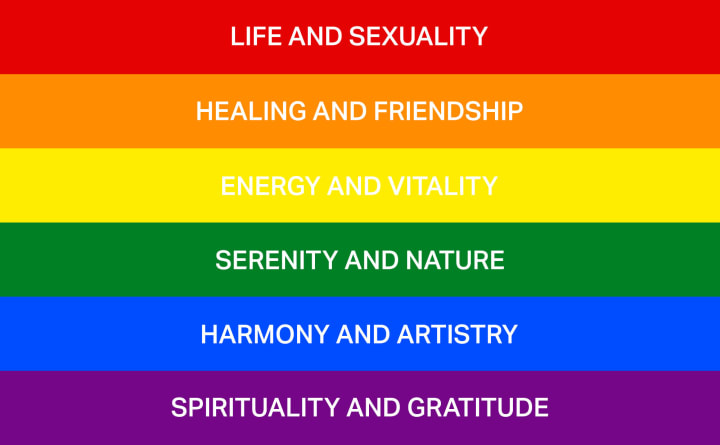
To start off the complete guide to sexual identity flags, we're going to start with the most well known flag out there: the rainbow flag.
This is the standard rainbow flag that has become synonymous with sexual equality, anti-discrimination endeavors, and gender equality for all genders. If you are LGBTQIA+, sporting this flag shows that you're here, you're queer, and you're awesome.
The rainbow flag is also most well-associated with gay males and lesbian females. So, it also happens to stand for gay pride in its most literal sense of the term, too.
Most people don't realize that each strip on the flag stands for something. Here's what each strip stands for:
- Red is life and sexuality.
- Orange is healing and friendship.
- Yellow is energy and vitality.
- Green is serenity and nature.
- Blue is harmony and artistry.
- Purple is spirituality and gratitude.
Lesbian Pride Symbols

It's hard to come up with a full guide to sexual identity flags for lesbians, because there are a lot of symbols outside of the standard rainbow flag that they might use. However, we're going to explain the biggest ones on the spectrum.
Here's a run-through of the three most common ones out there:
- One of the older symbols is the Lesbian Labrys flag, which shows an axe on a purple and black flag. This flag came into popularity because of Labrys Magazine, one of the oldest lesbian publications out there.
- The Blue Gradient Flag is a flag that goes from light blue to white, to a light purple. Butch lesbians tend to opt for the Blue Gradient Flag, since it suggests masculinity and gender.
- The Pink Gradient Flag is a flag that has bars that go from red to white to pink. "Lipstick lesbians," as they're known, tend to go for this symbol because it suggests a certain "girly" side to things. Some lipstick lesbians may also put a lipstick print on the flag to show their pride a little less subtly.
Bear Pride Flag

Most gay men will use the regular rainbow flag for their pride missions. However, larger gay males who identify as "bears" may opt to use the Bear Pride Flag.
The Bear Pride Flag is a barred gradient flag that runs from black, to yellow, to brown. And, it often has a bear paw up at the corner to signify the "Bear" movement.
It's worth noting that the Bear movement originally started as a way to celebrate gay males who didn't have a slender, youthful, "twink" physique — and show that bigger, hairier guys can be sexy, too. So, this is both a body positivity flag and a gay pride flag.
Bisexual Pride Flag
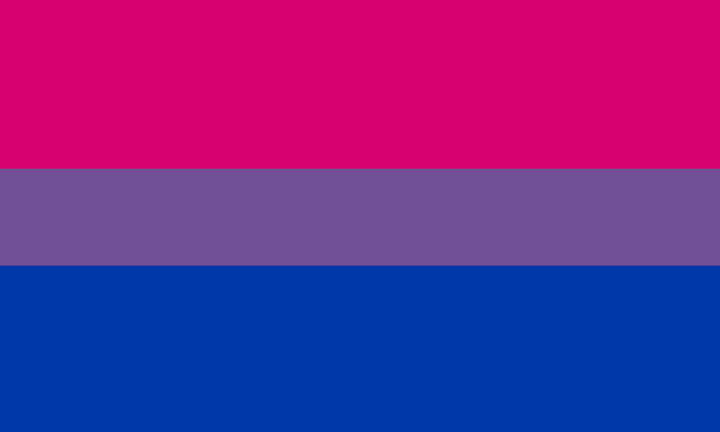
Bisexuals have their own sexual identity flags, too! This barred gradient flag is a three-striped flag consisting of a pink top, a purple middle, and a blue bottom. It's used by bisexual people of every gender, and as such, is one of the most common sexual identity flags you'll see outside of the standard rainbow flag.
This guide to sexual identity flags will also note that some bisexual pride groups also do a symbol that interlocks both male and female symbols with a circle to show pride in bisexuality.
Pansexual Pride Flag
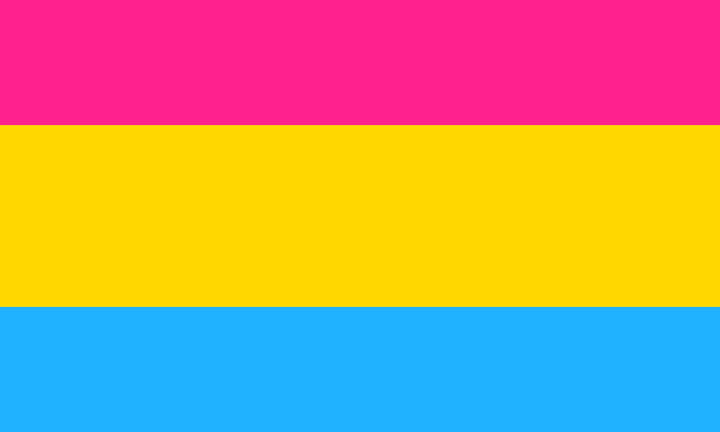
Many people aren't really into people by gender, and will date men, women, queer, and non-binary people in a pinch. Their sexual orientation is "HECK YES!"
These people are pansexuals, and they have their own sexual identiy symbol, too. As both a pansexual and the writer of this guide to sexual identities, I just couldn't leave these guys out.
Pansexual pride flags have three stripes: a pink top stripe, a yellow center stripe, and a blue bottom stripe. They also may use a P with a strike through it and an arrow at the bottom portion of the letter to indicate pansexuality.
Asexual/Demisexual Pride Symbols

Asexuals and demisexuals are people who have low to no interest in sex. Around 1 percent of all people are asexual, with many more being demisexual or low-libido. Many also are aromantic, which means they don't get romantically attracted to people, either.
Asexuals actually have quite a few pride flags and symbols due to how complex asexuality can be. Here's a complete guide to sexual identity flags dealing with asexuality, for those not in the know:
- Cake. Cake is actually a very common in-joke among asexuals, primarily because many can't understand the obsession with sex. The joke is, "Why can't we just have cake instead?"
- Ace of Spades. Aces are actually a subtle hint to the pronounciation of "asexual." So, if you see an Ace, that's what this means.
- Asexual Pride Flag. This is a four striped flag that has black at the top, grey underneath it, white underneath that, and purple at the bottom. Pride flags may also have hearts inside that show the genders they're romantically attracted to.
- Black Rings on the Middle Finger. It's a sign you're an asexual that other asexuals pick up on.
- Upside-down Grey Triangle. It's a sign that you're not attracted to anyone, or that you're demisexual.
- Aromantic Pride Flag 1. For people who don't experience romantic attraction, either, there's the Aromantic Pride Flag. The first version has four bars, with green at the top, yellow next, orange below that, and black at the bottom.
- Aromantic Pride Flag 2. For people who want to show asexuality and aromanticism, this flag is a better option. It's a five-bar flag with dark green at the top, light green underneath it, white in the middle, grey after that, then black at the bottom.
Polysexual Pride Flag
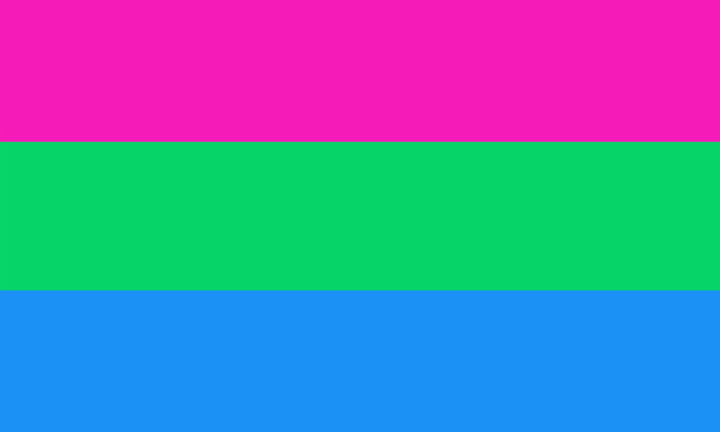
This is a complete guide to sexual identity flags and gender identity symbols, even the rare ones. That's why polysexuality is on this list. This is a sexual identity for people who are attracted to multiple — but not all — genders.
So, if you like women and nonbinaries, but not men, you might be polysexual. They show their pride by having a flag made of three bars of color. The top bar is neon pink, the middle bar is lime green, and the bottom bar is cyan.
Polyamory Pride Flag

Love more than one person at the same time? Are you good with open relationships? Then the Polyamory Pride Flag is one that you very likely resonate, even if you are heterosexual in nature.
This isn't going to be guide to sexual identity flags that fully encompasses all the different forms of polyamorous love, since that could take all day. So, we're just going to keep it simple by showing the most basic one.
The most basic Polyamory Pride Flag is blue at the top, red in the middle, and black on the bottom. It also may have a pi symbol in the middle, or an infinity symbol there.
Transgender Pride
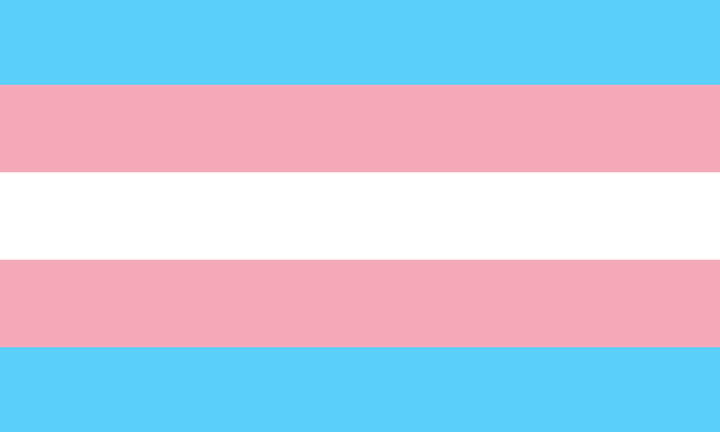
For those of us who are making the switch to a different gender, there's a serious need to show pride in who you are. After all, so much of society won't understand or doesn't get it.
Since gender identity and sexuality tend to go hand-in-hand, we're also going to go into this with our guide to sexual identity flags. Here are the most common transgender pride symbols out there:
- The Blue to Blue Flag. This flag is made of five bars, with a white bar being in the center of the flag, pink bars being next to them, and light blue bars on the top and bottom of the flag. This symbolizes being the gender you are inside.
- The Trans Symbol. This is a combination of the male and female symbol, each with their own prong. There's also an extra prong to show a combination of both the "arrow and mirror" symbols of each gender. So, three prongs — start, middle, finish — to remind you that your body doesn't define your gender.
Intersex Pride Symbols

Most people are born male or female... but not all. Some are born with sexual parts for both. These people are called intersex individuals, and they may look like a man but have ovaries — or look like a woman, but have testes. Some may even be guevedoces.
There's a huge amount of different symbols intersex people use — too many to list here, and many of them which aren't official. That being said, they do deserve inclusion and recognition here, too.
Here are some of the most common forms of gender identity symbols you can use to show support:
- The 6-Barred Flag. This flag has faded purple on the top and bottom, followed by white bars, followed by a pink bar on the bottom and a blue bar on the top.
- The Purple "O" On A Yellow Flag. This is the most commonly recognized Intersex Pride Flag right now.
Neutrois, Genderqueer, and Agender Pride

Some people's gender identities make other peoples' sexual identities difficult to define — and that's alright. It's hard to identify in certain genders, and if you don't feel like male or female, you might belong under the "genderqueer umbrella."
This is a complete guide to sexual identity flags and gender identity symbols, so it's only natural that we give our nod to the nonbinaries as well.
Neutrois individuals are people who are just purely gender neutral. They're neither male nor female, but are just doing their thing in a neutral way. It's gender-null. Neutrois may or may not feel the need to transition to a neutral gender.
Agender people such as myself do not like gender at all, but aren't really neutral, per se. It's just that we don't "get" gender. It all feels unnatural to us, and as such, we tend to feel awkward in both male and female roles.
For many, it's hard to understand the difference. A good euphemism for this is to say that it's like a light bulb. With neutrois people, the lightbulb is off. With agender, the lightbulb isn't there.
Both neutrois and agender people tend to use a three-striped flag that is white on the top, green in the middle and black on the bottom.
People who are gender-fluid, two-spirit or otherwise nonbinary may use the catch-all nonbinary flag, which is a three-striped flag that has purple at the top, white in the middle, and green on the bottom.
About the Creator
Ossiana Tepfenhart
Ossiana Tepfenhart is a writer based out of New Jersey. This is her work account. She loves gifts and tips, so if you like something, tip her!







Comments
There are no comments for this story
Be the first to respond and start the conversation.